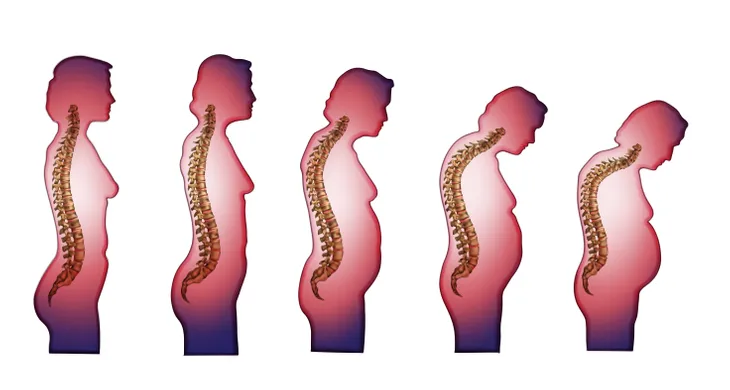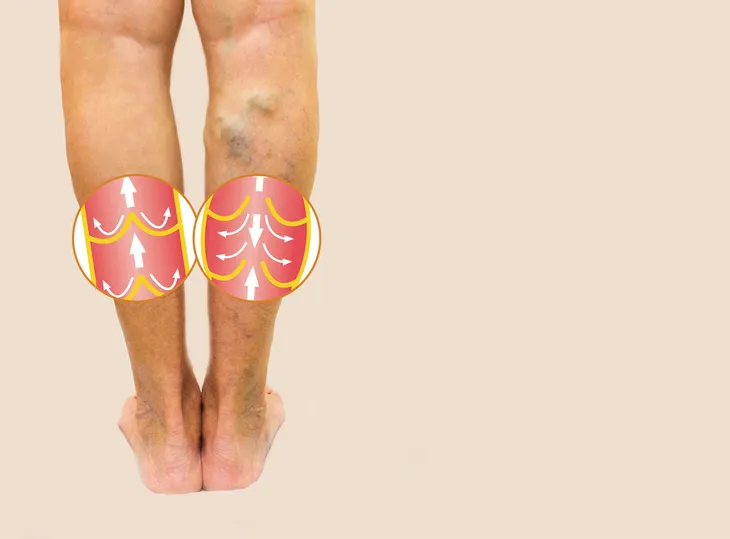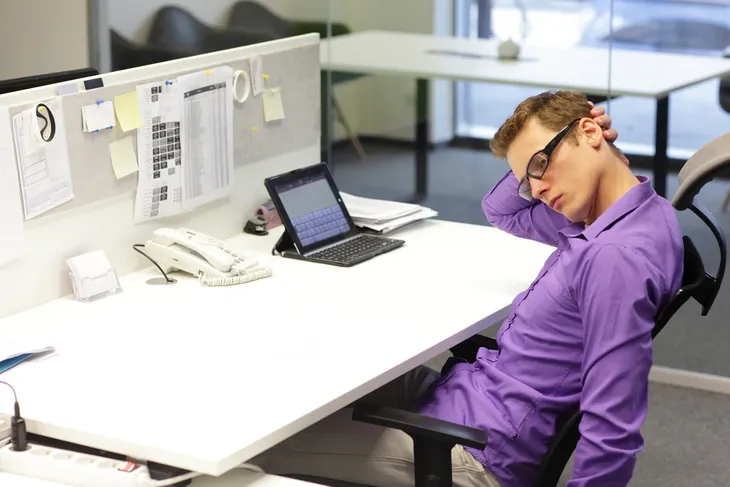All right; we get it, sitting is bad for us! This fact might particularly strike home for those of you, like myself, who sit at a desk for most of the day typing away at a computer. However, have you ever taken the time to research what happens, physically, to our bodies when we sit for extended periods of time?
Well I did, and I was somewhat shocked to discover that the very real and severe effects of sitting reverberate in health issues from top (head) to bottom (toe). Here are eight serious health problems that result from a habitually sedentary lifestyle according to expert research…
Brain Drain
According to studies from the National Cancer Institute, extended periods of sitting, for example working at a desk with no breaks, decreases our brain function and destroys the brain’s vascular network. This “brain fog” results due to decreased fresh blood and oxygen flow to the brain. When we’re active, blood and oxygen pump through the brain stimulating the discharge of mood-enhancing chemicals and hundreds of protective genes, in a process known as Brain-Derived Neurotrophic Factor (or BDNF).
The BDNF process is essential for fresh brain neuron growth and protection (i.e., damage from trauma, stress, and environmental toxins). However, when we’re sedentary, fresh blood and oxygen flow is limited, positive chemical release is stalled, and the brain becomes confused, forgetful, and unable to focus as clearly.
Misalignment of the Neck, Shoulders, and Upper Spine
Envision how you sit at your desk at work. Likely you sit slouched with you neck craned forward instead of aligned with the spine. And don’t get me started on the shoulders and back—slumped forward with humped shoulders, rounded upper trapezius (the muscles that connect the neck and shoulders), and arching at the lower back.
Improper alignment of the cervical vertebrae (neck), shoulders, and spine as you type for hours without getting up will lead to repetitive strain on the joints and tissue along the entire cervical vertebrae—the bony rings that span from the base of the skull to the thoracic vertebrae in the trunk.
Hardening, Tightness, and Herniated Lower Back
Your mom always badgered you to “Sit up straight,” and for good reason! Mom was only trying to prevent you from a future wrought with back problems. Research from the National Institute of Neurological Disorders and Stroke, remind us that while regular movement promotes fresh blood and nutrient flow to the spongy soft discs between vertebrae—sitting for extended periods of time causes temporary misalignment of discs and the stiffening of tendons and ligaments.
If you do work at a desk, aim to sit up straight without leaning forward (your neck shouldn’t extend past your shoulders), your shoulders relaxed, arms bent at 90-degree angles at the side, feet flat on the floor and lower back (the lumbar region) supported by a backrest to prevent tight psoas muscles (which pulls the lumbar spine forward) and causes strain on your lumber discs.
Chronic Organ Damage
Colon cancer, fatty liver disease, and cardiovascular disease are all on the list of risks for those who spend the majority of their time sitting—even if you exercise regularly, claims a group of nutritionists and physiologists from the University of Missouri.
Numerous studies link the decreased blood flow and fat burning associated with sitting to an increased risk of clogged arteries, high blood pressure, heightened cholesterol, digestive issues, and cardiovascular disease, and fatty liver disease. Researchers point out that even if you’re active outside of work, it’s vital to get up from your desk and move regularly throughout the day. Let’s not forget the temptation to eat heart-clogging convenience foods when we’re stuck at our desks, either.
Muscular Degeneration
Think of it like this—unused muscles can go to mush very quickly. And scientists at Arizona State University point out that muscle degeneration slowly develops the less you use your body to stand, walk around, push off, and sit up straight.
The same occurs if you sit down too much, too often. For instance, slumping in a chair causes weakness in the neck, shoulder, upper and lower spine, and abdominal muscles. Mushy abs, too tight hip flexors, and slouchy lumbar back muscles cause the spine to cave outward exaggerating the natural arch and limiting range of motion in the back, hips, and glutes.
Chronic Diseases
A research study published in the Journal of Applied Physiology, claims that physical inactivity causes several chronic diseases—such as colon, endometrial, and breast cancers, diabetes, fatty liver disease, and obesity. How?
While regular movement boosts the production of protective antioxidants, being sedentary leaves the cells exposed to potentially cancer-causing free radicals. In addition, studies show a drastic decline in insulin response after a mere day of prolonged sitting, putting habitually sedentary individuals at higher risk for Type 2 diabetes.
Varicose Veins and Blood Clots
We’ve all heard the tragic stories of a friend of a friend of a friend who developed a life-threatening blood clot after sitting still on an 18-hour flight. As improbable as it might sound, doctors from Ontario, Canada’s Hamilton General Hospital, Clinical Thromboembolism Program, warn that sitting for long periods of time at a desk or even on the couch can also cause severe deep vein thrombosis (DVT)—especially if you are obese.
The danger of a blood clot becomes potentially fatal if it dislodges, enters the lungs, and causes a blockage (or pulmonary embolism). DVT occurs when blood circulation slows and fluid is able to pool in one area of the legs, resulting in a blood clot. On a lesser scale, but equally concerning, habitual sitting can also result in chronically swollen ankles, varicose veins, and osteoporosis due to lack of activity.
Disabilities and Death from Habitual Sitting
It’s not uncommon for the average North American to sit for 8 or more hours each day. However, the idea of death by sitting still seems somewhat ridiculous. While sitting throughout your day is harmless—an 8 ½ year study conducted by Northwestern University found that chronic sitting, especially for older adults, increases the risk of physical disability by half.
The same study revealed that individuals who make it a habit to sit and watch TV (or play video games) in the evenings increased their rate of mortality by roughly 61-percent compared to those who only watched one hour of television per day. If you do like to watch the tube at night, do yourself a favor and take walking or exercise breaks during commercials.











